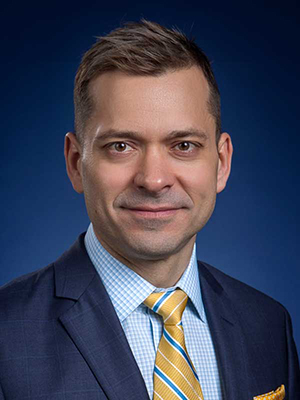Ross Professor: There's Something Terribly Wrong With How We Make Decisions About Climate Change


For over two decades, Joe Árvai has studied how we actually make choices — compared to how we think we make them. It will come as no surprise to even the most casual observers that the gulf between them can be large.
In a recent study, Árvai and Douglas Bessette of Michigan State University found a clever way to measure this phenomenon. Motivated by the “ethical oil” debate in Canada, they designed a study that would allow drivers to view a menu of gasoline options from different countries. The menu depicted the pros and cons of each option, according to different dimensions of sustainability. After viewing the menu, drivers were asked to choose their preferred option. Next, drivers were asked to rate the relative importance to them of each sustainability dimension. Árvai and Bessette used these ratings to calculate which country of origin was most in line with their priorities. The result? A big disconnect between what people intuitively chose, and what their values would have had them choose instead.
Árvai, Bessette, and Robyn Wilson of The Ohio State University applied the same research approach to some simple choices — like shopping for a car or a mobile phone — and some much harder choices, like what to do about the conflict in Syria and fighting climate change.
The research carries important implications and insights as leaders debate strategies to mitigate climate change. The topic of climate change and workable mitigation strategies is the focus of the University of Michigan’s annual Wege Lecture featuring Christiana Figueres, known as the architect of the Paris climate agreement, at 5 p.m. Thursday. The event is cosponsored by the Erb Institute, the joint venture between Michigan Ross and the School for Environment and Sustainability that Árvai leads.
Árvai recently sat down to discuss the implications of his latest research.
How did you apply your research on decision-making to climate change?
In our study, strategic options on climate change included decarbonizing the energy sector, adopting geoengineering strategies like carbon capture and storage, and even doing nothing. Here, as with the other choices we studied, we found big differences between what aspects of the problem people think are really important, and the decisions they intuitively made.
Why is this research particularly interesting from a climate change perspective?
When we talk about things like the Green New Deal and the Paris accord, we talk about mitigation strategies in the abstract; let’s agree to do something that gets us to below 2 degrees. But making choices about the competing “somethings” is the tricky part. We need to select options that account for all the things that matter to us from an environmental, social, and — yes — economic perspective. I've seen very little in my research, or in the research of others, that indicates that the manner in which people intuitively make these choices is going to be in line with their priorities.
I think there's certainly potential for us to be able to make better, more well calibrated—that is to say, in terms of our priorities—choices. But the first step in the process is taking a step back to see what we’re really doing, and then to be open to the fact that we need to think and decide differently.
How are you getting this work out into the real world?
I’ve written articles aimed at public audiences and policy makers. I even tried my hand at giving a TED Talk, which was hard for an introvert like me. But, maybe the most important thing I do is consult for businesses and advise government; with a few exceptions like tobacco and gun companies, I’m interested in working with anyone who is actually interested in making strategic decisions that are more in line with what they care most about. The number of takers out there has been surprisingly large!
Is it harder to implement this approach in government?
Yes and no. Politics gets involved, money gets involved, and special interests get involved; so, sometimes it's easier, or more politically expedient, to just muddle through. On the other hand, I’ve been involved in cases at the federal level where there’s a mandate or need to tightly align decisions with priorities; an example is—or at least, was under the Obama administration—rulemaking at the EPA. Rules about what to allow or disallow, or about what penalties to impose on polluters, had to be a function of established thresholds that were driven by clearly articulated priorities.
It seems that providing people with more information would help them to make better decisions, but you found that’s not true. Why?
There are three challenges with simply providing more information and hoping for the best. The first is that, often, our emotions pull us in the direction of certain options. In spite of intuition or popular opinion, being given more information just doesn't do anything to alleviate that. The second challenge is that the more information you put into the decision-making calculus, the harder it is to know what to do with it; people end up in a state of analysis-paralysis. The third challenge is that a lot of the information that gets thrown into a decision often has limited connection to the things that the decision maker actually cares about. A big part of my research agenda going back to when I was a PhD student has been on developing and testing tools that address these three challenges.
Learn more about the Wege lecture







